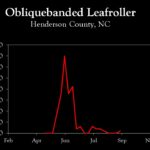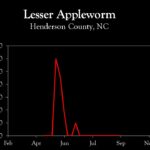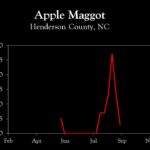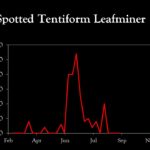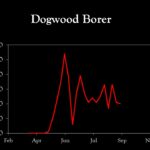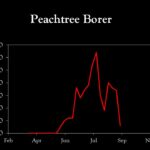WNC Orchard Insect Pest Populations – September 14, 2021
go.ncsu.edu/readext?821088
en Español / em Português
El inglés es el idioma de control de esta página. En la medida en que haya algún conflicto entre la traducción al inglés y la traducción, el inglés prevalece.
Al hacer clic en el enlace de traducción se activa un servicio de traducción gratuito para convertir la página al español. Al igual que con cualquier traducción por Internet, la conversión no es sensible al contexto y puede que no traduzca el texto en su significado original. NC State Extension no garantiza la exactitud del texto traducido. Por favor, tenga en cuenta que algunas aplicaciones y/o servicios pueden no funcionar como se espera cuando se traducen.
Português
Inglês é o idioma de controle desta página. Na medida que haja algum conflito entre o texto original em Inglês e a tradução, o Inglês prevalece.
Ao clicar no link de tradução, um serviço gratuito de tradução será ativado para converter a página para o Português. Como em qualquer tradução pela internet, a conversão não é sensivel ao contexto e pode não ocorrer a tradução para o significado orginal. O serviço de Extensão da Carolina do Norte (NC State Extension) não garante a exatidão do texto traduzido. Por favor, observe que algumas funções ou serviços podem não funcionar como esperado após a tradução.
English
English is the controlling language of this page. To the extent there is any conflict between the English text and the translation, English controls.
Clicking on the translation link activates a free translation service to convert the page to Spanish. As with any Internet translation, the conversion is not context-sensitive and may not translate the text to its original meaning. NC State Extension does not guarantee the accuracy of the translated text. Please note that some applications and/or services may not function as expected when translated.
Collapse ▲Last Pest Update of 2021 and BMSB Still Reigns!
 For all practical purposes, brown marmorated stink bug remains the only pest of apples throughout the region. You have probably noticed many beginning to disperse to buildings, cars, and other structures, which is a response to declining day length and an effort to locate overwintering sites. However, before they enter overwintering sites they need to consume food to build up fat reserves to survive the winter, and apples remain an ideal food source. While much of the population has completed emergence in lower elevation sites (i.e., Cleveland County), approximately 25% and 45% of first-generation adults have yet to emerge in Wilkes and Henderson County, respectively. As these adults emerge and seek food, apples will remain at risk, especially highly susceptible cultivars such as Granny Smith and Pink Lady. Hence, control may still be necessary on apples that will not be harvested until October.
For all practical purposes, brown marmorated stink bug remains the only pest of apples throughout the region. You have probably noticed many beginning to disperse to buildings, cars, and other structures, which is a response to declining day length and an effort to locate overwintering sites. However, before they enter overwintering sites they need to consume food to build up fat reserves to survive the winter, and apples remain an ideal food source. While much of the population has completed emergence in lower elevation sites (i.e., Cleveland County), approximately 25% and 45% of first-generation adults have yet to emerge in Wilkes and Henderson County, respectively. As these adults emerge and seek food, apples will remain at risk, especially highly susceptible cultivars such as Granny Smith and Pink Lady. Hence, control may still be necessary on apples that will not be harvested until October.
This will be the last Apple Pest Update of 2021. Our sense is that it was a relatively cool year with fairly low pest pressure – other than late-season BMSB populations. Hopefully, the remainder of harvest runs smoothly with no problems.
Learn more about southeastern apple insect pests at the Apple Insect Management page.
2021 Average Weekly Trap Captures
| HENDERSON COUNTY | |||
| Insects per trap | |||
| Aug 31 | Sep 7 | Sep 13 | |
| Codling moth | 0.0 | 0.0 | 0.0 |
| Oriental fruit moth | 54.0 | 43.0 | 34.0 |
| Tufted apple bud moth | 0.0 | 0.0 | 1.0 |
| Redbanded leafroller | 0.0 | 0.0 | 0.0 |
| Obliquebanded leafroller | 0.0 | 0.0 | 1.0 |
| Lesser appleworm | 0.0 | 0.0 | 0.0 |
| Apple maggot (abandoned and research orchards) | 2.7 | 1.3 | 0.3 |
| Brown marmorated stink bug (commercial) | 28.0 | 25.0 | 23.8 |
| Brown marmorated stink bug (unsprayed) | 29.5 | 41.0 | 46.5 |
| Spotted tentiform leafminer | 0.0 | 0.0 | 0.0 |
| Dogwood borer | 33.0 | 21.0 | 20.0 |
| Peachtree borer | 18.0 | 17.0 | 3.0 |
| Lesser peachtree borer | 31.0 | 24.0 | 8.0 |
| San Jose scale | 0.0 | 0.0 | 0.0 |
*Note that these averages illustrate only the timing of insect emergence and fluctuations in populations, and are not representative of population levels in any given orchard. The only way to have an accurate assessment of an individual orchard’s populations is to set up traps in that orchard.
2021 Accumulated Degree Days
| HENDERSON COUNTY | ||||
| Aug 31 | Sep 7 | Sep 13 | ||
| Codling moth (Biofix: April 10) |
2519 | 2685 | 2781 | |
| Oriental fruit moth (Biofix: March 27) |
3293 | 3498 | 3631 | |
| Tufted apple bud moth (Biofix: April 30) |
2934 | 3139 | 3272 | |
2021 Pest Trends (click to enlarge)
Visit WNC Orchard Insect Populations for archived posts.







